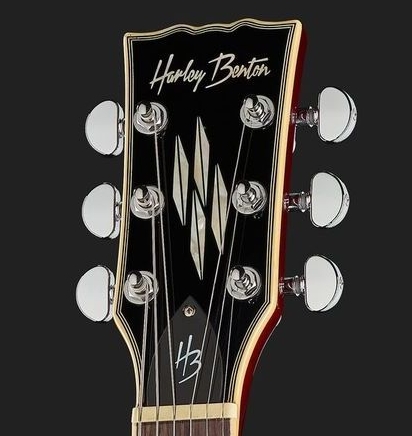Howdy, Stranger!
It looks like you're new here. If you want to get involved, click one of these buttons!
Categories
- 242.3K All Categories
- 22 >> Start Here <<
- 12 New Members
- 8 FAQs
- 86.9K Gear
- 39.6K Guitar
- 3.4K Acoustics
- 1.3K Bass
- 14.7K Amps
- 17.3K FX
- 277 Digital & Modelling
- 766 Other Instruments
- 8.3K Making & Modding
- 422 Gear Reviews
- 107 Guitar Reviews
- 73 Amp Reviews
- 119 FX Reviews
- 87 Other Reviews
- 750 Made in the UK
- 975 Theory
- 1.9K Technique
- 2.1K Live
- 3.2K Studio & Recording
- 2.1K Making Music
- 220 Events
- 15 Guitar Show 2018
- 834 Plug My Stuff
- 105.5K Classifieds
- 41.2K Guitars £
- 2.8K Acoustics £
- 140 LH Guitars £
- 903 Basses £
- 10.6K Parts £
- 18.4K Amps £
- 34.2K FX £
- 2.8K Studio & Rec £
- 6.1K Misc £
- 465 Personnel
- 54.9K Chat
- 36.6K Off Topic
- 1.1K Tributes
- 6.6K Music
Become a Subscriber!
Subscribe to our Patreon, and get image uploads with no ads on the site!
Shielding Paint
 BillDL
Frets: 7388
BillDL
Frets: 7388
I have two finished electric guitar bodies for single coil pickups. I usually use self-adhesive copper shielding tape if I decide a guitar might be worth spending some extra time on or actually benefit from shielding, but it's fiddly to use so I decided instead to buy a small tine of "Rustins G Shield" water based EMI shielding paint from Northwest Guitars. I just decided to shield them while I was at it whether or not they might need it, and the paint seemed to be a much cleaner and less fiddly option.
The label iterates what is on the Rusin's page, i.e.
"Rustins G-Shield is based on a high-quality water-borne, cross-linking acrylic resin containing Natural Exfoliated Graphene to provide reliable shielding from high-frequency electromagnetic fields and low-frequency electrical fields. G-Shield is solvent free with low-emissions and has lasting corrosion resistance as the paint contains no metal particles, the graphene in the paint prevents the formation of corrosion on metal surfaces."
I've never used shielding paint like this before. I used to have an aerosol of protective zinc paint that was conductive and worked well for shielding but it never really formed a hard smooth surface and dried kind of "powdery", and I once used a silver paint-on shielding that felt "metallised" once dry. This Rustins paint is jet black, goes on smoothly and seems to dry to a nice matte black, but when it is touched with anything, the graphite rubs off exactly as it would if you scribbled on paper with an HB pencil and then rubbed your finger over it and it leaves shiny spots on the paint. It says in the blurb that it can be used under emulsion paint, but I'm not entirely convinced that other paint would adhere properly to it's slight slipperiness.
Additionally it isn't very electrically conductive. When using a digital multi-meter in continuity mode I get the beep when I'm testing conductivity and the probes are quite close together, but from one end of a continuous "strat" cavity to the other I don't get a beep at all just like THIS guitar builder discovered. I notice that the video made by Rustins is demonstrating mobile phone signal blocking or "electro smog shielding" using a cardboard box rather than guitar shielding, so electrical conductivity and grounding isn't a consideration in the demonstration.
My understanding of shielding in a guitar is that it has to form a continuous conductive path throughout all the surfaces that are shielded, and this is grounded. Clearly this paint isn't going to be as good in the conductivity aspect as copper foil, but is it going to work as intended?
Has anybody used this Rustins product, and what are your thoughts about it or about paint-on shielding in general?
0 LOL 0
LOL 0 Wow! 0
Wow! 0 Wisdom
Wisdom
 LOL 0
LOL 0 Wow! 0
Wow! 0 Wisdom
Wisdom Base theme by DesignModo & ported to Powered by Vanilla by Chris Ireland, modified by the "theFB" team.


Comments
I have a tin of the nickel screening paint that is going spare - nearly a litre if someone is interested as seem to be using the G shield most of the time now
Many guitars have a re-sale value. Some you'll never want to sell.
Stockist of: Earvana & Graphtech nuts, Faber Tonepros & Gotoh hardware, Fatcat bridges. Highwood Saddles.
Pickups from BKP, Oil City & Monty's pickups.
Expert guitar repairs and upgrades - fretwork our speciality! www.felineguitars.com. Facebook too!
A cleaner alternative would be copper shielding tape or sheets, and it has the advantage of being shiiiiiiny ooooooh.
"Take these three items, some WD-40, a vise grip, and a roll of duct tape. Any man worth his salt can fix almost any problem with this stuff alone." - Walt Kowalski
"Only two things are infinite - the universe, and human stupidity. And I'm not sure about the universe." - Albert Einstein